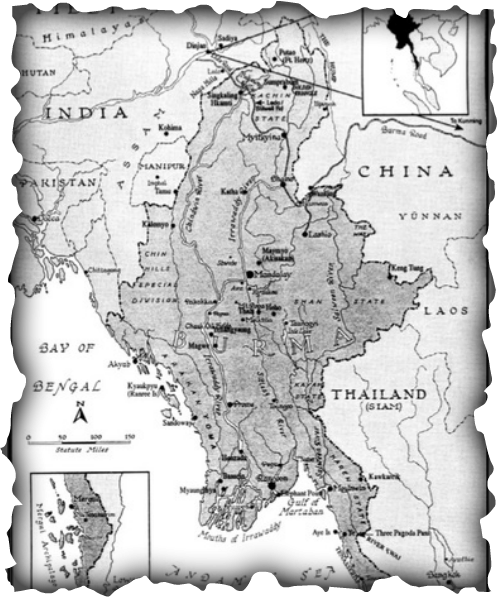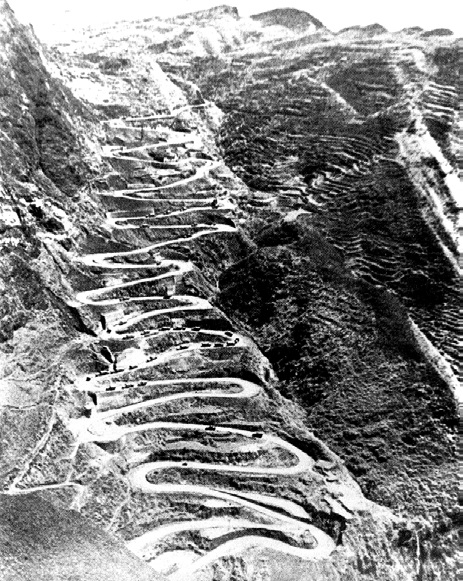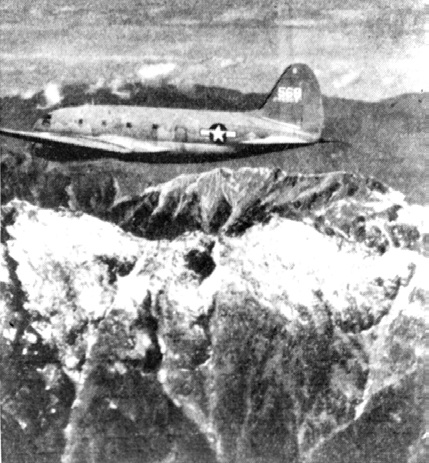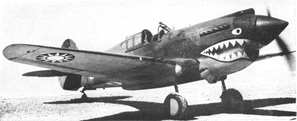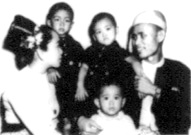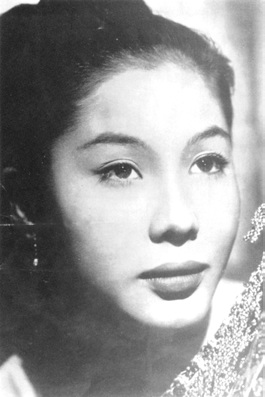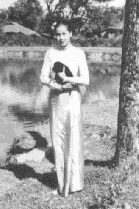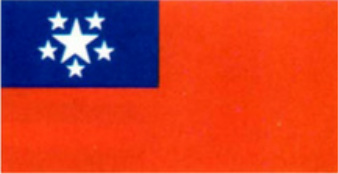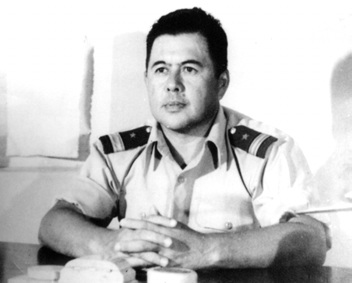Burma - Road to Independance
During World War 2 the Japanese used the tropical Chinese Island of Hainan in the Gulf of Tonkin, to train a Burman group. The Japanese called them the thirty comrades who would form the nucleus of Japan’s Defence Army in Burma. They abandoned their given names and took the title of Bo – meaning officer.
Almost immediately the Japanese, not known for their winning ways, became troubled by their proteges. They found these youthful monsters were beyond control. Their acts shocked even their hardened masters who had honed rapine, rape and murder to a fine edge. The Japanese disbanded them as a group and posted them to individual commanders for the invasion of Burma.
Captain Carlton Fletcher Pat Moore’s first brush with the rising sun came on 15 December 1941. An employee of Air India on loan to the RAAF, Pat had just offloaded stores for the British garrison at Victoria Point, Burma’s most southern airfield. As he began to taxi, mortar fire bracketed his DC-3. Although facing downwind he slammed open the throttles and scraped through the trees. Later, a check revealed branches jammed around his wheels – he had avoided disaster by a whisker! He had freight for Mergui, Tavoy and Moulmein, but was these places still in British hands? He had no way of knowing! Heavy static prevented him from contacting these stations so he proceeded to Rangoon. When he finally made radio contact he requested that a Government official meet his plane at Mingaladon.
Sensing the worst, The Governor, Sir Reginald Dorman-Smith sent his aide. Pat’s report proved vital, as it was the Governor’s first knowledge that the Japanese were on the move. Later that day they learned that Victoria Point had fallen, and that Japan’s troops were streaming through the Kawkareik and Three Pagodas Passes from bases in Siam. However, the invading forces seemed in no hurry to get moving. Finally, satisfied with their consolidation the invasion began to roll up the Tenasserim coast. The thirty comrades were in the vanguard as the Japanese captured Tavoy on 20 January 1942. They helped occupy Moulmein and Pegu.
Almost immediately the Japanese, not known for their winning ways, became troubled by their proteges. They found these youthful monsters were beyond control. Their acts shocked even their hardened masters who had honed rapine, rape and murder to a fine edge. The Japanese disbanded them as a group and posted them to individual commanders for the invasion of Burma.
Captain Carlton Fletcher Pat Moore’s first brush with the rising sun came on 15 December 1941. An employee of Air India on loan to the RAAF, Pat had just offloaded stores for the British garrison at Victoria Point, Burma’s most southern airfield. As he began to taxi, mortar fire bracketed his DC-3. Although facing downwind he slammed open the throttles and scraped through the trees. Later, a check revealed branches jammed around his wheels – he had avoided disaster by a whisker! He had freight for Mergui, Tavoy and Moulmein, but was these places still in British hands? He had no way of knowing! Heavy static prevented him from contacting these stations so he proceeded to Rangoon. When he finally made radio contact he requested that a Government official meet his plane at Mingaladon.
Sensing the worst, The Governor, Sir Reginald Dorman-Smith sent his aide. Pat’s report proved vital, as it was the Governor’s first knowledge that the Japanese were on the move. Later that day they learned that Victoria Point had fallen, and that Japan’s troops were streaming through the Kawkareik and Three Pagodas Passes from bases in Siam. However, the invading forces seemed in no hurry to get moving. Finally, satisfied with their consolidation the invasion began to roll up the Tenasserim coast. The thirty comrades were in the vanguard as the Japanese captured Tavoy on 20 January 1942. They helped occupy Moulmein and Pegu.
|
When Rangoon fell to the monkey men on 3 March 1942 – the murderous thirty comrades were there. The Japanese tactic of surrounding then attacking continued to succeed. Town after town fell to this ploy, however they were forced to fight every mile of the way.
On 29 April 1942 they overran Lashio and cut the source of the Burma Road. The allies replaced this loss with the legendary air supply route from Dinjan to Kunming – blithely called the Hump.
By 14 May 1942 the Japanese had driven Lieutenant General the Hon. Sir Harold Alexander’s forces from Burma. The campaign spawned many gallant adventures, such as the famed American P40B Tomahawk fighters flown by the youthful mercenaries of the American Volunteer Group (AVG) and the greatest Flying Tiger of them all, their commander, the fabled Brigadier General Claire Lee Chennault. Then there were the peasant builders of the astonishing Burma Road and the gallant Rock Dodgers whom mastered the deadly weather of The Hump, and the soldiers that fought a rear guard action of more than a thousand miles. Although exhausted, under the leadership of Lieutenant General William Uncle Bill Slim, their low spirits became an advance that would finally free Burma. Meanwhile, there emerged the unbeatable Chindits commanded by the strange but brilliant Colonel Orde Wingate. These were times when mere humans replicated the deeds of the Homeric epics.
On 3 May 1945 Gurkha para-troops of the 26th Division landed 20 miles southeast of Rangoon at Elephant Point. Then came the atomic bombs that devastated Hiroshima and Nagasaki and led to Japan’s surrendered on the 12 September 1945.
On 29 April 1942 they overran Lashio and cut the source of the Burma Road. The allies replaced this loss with the legendary air supply route from Dinjan to Kunming – blithely called the Hump.
By 14 May 1942 the Japanese had driven Lieutenant General the Hon. Sir Harold Alexander’s forces from Burma. The campaign spawned many gallant adventures, such as the famed American P40B Tomahawk fighters flown by the youthful mercenaries of the American Volunteer Group (AVG) and the greatest Flying Tiger of them all, their commander, the fabled Brigadier General Claire Lee Chennault. Then there were the peasant builders of the astonishing Burma Road and the gallant Rock Dodgers whom mastered the deadly weather of The Hump, and the soldiers that fought a rear guard action of more than a thousand miles. Although exhausted, under the leadership of Lieutenant General William Uncle Bill Slim, their low spirits became an advance that would finally free Burma. Meanwhile, there emerged the unbeatable Chindits commanded by the strange but brilliant Colonel Orde Wingate. These were times when mere humans replicated the deeds of the Homeric epics.
On 3 May 1945 Gurkha para-troops of the 26th Division landed 20 miles southeast of Rangoon at Elephant Point. Then came the atomic bombs that devastated Hiroshima and Nagasaki and led to Japan’s surrendered on the 12 September 1945.
The British resumed their civil administration in October 1945 and sought guidance from the Burma Executive Council. Elements of the thirty comrades, now called the thirty criminals had infiltrated the Council. However, of the thirty only three are necessary for our story.
The Thirty’s commander was Bo Te Za. This was Aung San who held the rank of Major General. He married Daw Khin Kyi on 6 September 1942 and fathered Burma’s hapless 1991 Nobel Peace Prizewinner - Aung San Suu Kyi. General Aung San died in a hail of bullets in 1947 during a Council sitting. The next was Bo Setkya who had forsaken his Burmese name, Mg Aung Than, to become one of the thirty. U Sway Tin knew him as a schoolmate Jimmy Klusemann and as Bo Setkya he became the front man for the short-lived Air Burma. He married Helga Johnson, a shapely widow, and remained a faithful husband until his early death during the late 1950’s in a Bangkok hospital. Helga became a Buddhist nun, but is best remembered as Win Min Than, Gregory Peck’s leading lady in the 1955 movie The Purple Plain.
Finally, and probably the most notorious, was Bo Ne Win, the ex-mail sorter who became General Ne Win, the strong man of Burma. He is remembered for his tempestuous liaison with the gorgeous June Rose Bellamy. We pilots remember June Rose for her tempestuous liaison with one of our virile captains, and to the utter disgust of the rest of us! The people of Burma remember Ne Win as the President who herded them along the path of isolation and total despair.
Yet, before most of this happened the killing fields would remain active as fields of killing.
The Thirty’s commander was Bo Te Za. This was Aung San who held the rank of Major General. He married Daw Khin Kyi on 6 September 1942 and fathered Burma’s hapless 1991 Nobel Peace Prizewinner - Aung San Suu Kyi. General Aung San died in a hail of bullets in 1947 during a Council sitting. The next was Bo Setkya who had forsaken his Burmese name, Mg Aung Than, to become one of the thirty. U Sway Tin knew him as a schoolmate Jimmy Klusemann and as Bo Setkya he became the front man for the short-lived Air Burma. He married Helga Johnson, a shapely widow, and remained a faithful husband until his early death during the late 1950’s in a Bangkok hospital. Helga became a Buddhist nun, but is best remembered as Win Min Than, Gregory Peck’s leading lady in the 1955 movie The Purple Plain.
Finally, and probably the most notorious, was Bo Ne Win, the ex-mail sorter who became General Ne Win, the strong man of Burma. He is remembered for his tempestuous liaison with the gorgeous June Rose Bellamy. We pilots remember June Rose for her tempestuous liaison with one of our virile captains, and to the utter disgust of the rest of us! The people of Burma remember Ne Win as the President who herded them along the path of isolation and total despair.
Yet, before most of this happened the killing fields would remain active as fields of killing.
In September 1946 Aung San was given the disposition of most of the seats on the Governor’s Executive Council. He went to London in January 1947 as leader of the Anti Fascist People’s Freedom League, a nominally all-party front, and agreed to Prime Minister Clement Attlee’s terms for Burma’s independence. Three months later Aung San’s league scored a resounding victory in general elections.
The Constituent Assembly met on 10 June, and six days later proclaimed Burma an independent sovereign republic. On 19 July Aung San and six of his Cabinet Ministers were assassinated while holding a Cabinet meeting. The Speaker of the Constituent Assembly, Thakin Nu, defused the situation by accepting the Prime Ministership.
In September all parties approved the draft Constitution. The next month Prime Minister Nu and Mr Attlee signed a treaty covering financial, defence and commercial relations. The transfer of power from the British Raj took place on 4 January 1948 and their new flag flew
proudly over the seat of government. But this proud new country’s troubles were just beginning.
The Karens who had fought and died beside the British knew they were betrayed. They realised they never would get their promised State and moved towards crushing Burman dominance.
The Karen’s held the Burmans in low esteem considering them a race of lazy dreamers ever ready to let others pull their chestnuts from the fire. The Burmans were growers of wet rice, traders in pottery, lacquer-ware and metal products. They had lived in the lowlands of central and southern Burma for at least a thousand years and had adopted Buddhism at an early stage. A succession of powerful dynasties had displayed sophisticated statecraft and fostered artistic traditions. Before the British came the Karens had remained isolated within their own mountainous country on Thailand’s western border. This is a rugged inhospitable land adjoining the Salween River that enters the Gulf of Martaban near the city of Moulmein. They were mercilessly harried by the Burmans who called them Hill cattle and regarded them as animals of burden. The coming of the British revitalised the Karens, and in each of the three British Burma Wars they fought the Burmans and gave sterling service to the British invader. They fell under the spell of American Baptist missionaries and Roman Catholicism, and many became devout Christians.
The Constituent Assembly met on 10 June, and six days later proclaimed Burma an independent sovereign republic. On 19 July Aung San and six of his Cabinet Ministers were assassinated while holding a Cabinet meeting. The Speaker of the Constituent Assembly, Thakin Nu, defused the situation by accepting the Prime Ministership.
In September all parties approved the draft Constitution. The next month Prime Minister Nu and Mr Attlee signed a treaty covering financial, defence and commercial relations. The transfer of power from the British Raj took place on 4 January 1948 and their new flag flew
proudly over the seat of government. But this proud new country’s troubles were just beginning.
The Karens who had fought and died beside the British knew they were betrayed. They realised they never would get their promised State and moved towards crushing Burman dominance.
The Karen’s held the Burmans in low esteem considering them a race of lazy dreamers ever ready to let others pull their chestnuts from the fire. The Burmans were growers of wet rice, traders in pottery, lacquer-ware and metal products. They had lived in the lowlands of central and southern Burma for at least a thousand years and had adopted Buddhism at an early stage. A succession of powerful dynasties had displayed sophisticated statecraft and fostered artistic traditions. Before the British came the Karens had remained isolated within their own mountainous country on Thailand’s western border. This is a rugged inhospitable land adjoining the Salween River that enters the Gulf of Martaban near the city of Moulmein. They were mercilessly harried by the Burmans who called them Hill cattle and regarded them as animals of burden. The coming of the British revitalised the Karens, and in each of the three British Burma Wars they fought the Burmans and gave sterling service to the British invader. They fell under the spell of American Baptist missionaries and Roman Catholicism, and many became devout Christians.
|
Left: 4 January 1948 Burma’s Independence Flag. Blue rectangle at top left on red field. Red is for courage and unity, white for purity and truth, and blue for the night sky. The large star represents the Country. The five smaller stars represent her five ethnic minorities. (Myan-Ma’s current flag has 14 small white stars that surround a cogwheel and a rice plant. The stars stand for the 14 states of the union. The cogwheel and rice represent the importance of agriculture and industry.)
(Ref: U Sway Tin) |
Under the secure conditions of British rule the Karens established thriving communities around Toungoo, Thaton, Moulmein and Pyapon. They became recognised as one of the martial races of Burma and when open rebellion flared the Karen contingent was the strongest in the Army. The commander-in-chief Lieutenant General Smith-Dun and the Commander of the Air Force Tommie Clift were both Karens. The Karen’s adoption of the
Roman script introduced by the Christian missionaries had greatly facilitated Karen dominance of the professions and in the field of commerce.
Until about Christmas 1948 the Communist elements were the chief fomenters of dissatisfaction in the new Burma. In hooligan bands of several persuasions, they were well armed with the discarded weapons of several armies. Fortunately, their un-coordinated efforts were more annoying than dangerous until one fatal night when a masked gang rolled several hand grenades into the Roman Catholic Church at Moulmein. Dozens of innocent worshippers were killed and horribly mutilated. At that time Moulmein was playing host to a full battalion of Karen infantry with a Karen transport section in support. They had reached the end of their tether and a vicious civil war began as they took arms against the Burmans, their traditional enemies who they blamed for the atrocity.
This then is a very truncated resume of the lead up to the insurgency. It is an over simplification to define the Moulmein massacre as the reason for the Karen civil war, yet it was probably the last straw, and the rebellion that seemed to many a worthy cause came within an ace of succeeding!
Cathay Pacific’s entry on the Burma scene had predated this organised Karen rebellion by about a year, and the sporadic trouble caused by the Communists brought plenty of work to our company.
Roman script introduced by the Christian missionaries had greatly facilitated Karen dominance of the professions and in the field of commerce.
Until about Christmas 1948 the Communist elements were the chief fomenters of dissatisfaction in the new Burma. In hooligan bands of several persuasions, they were well armed with the discarded weapons of several armies. Fortunately, their un-coordinated efforts were more annoying than dangerous until one fatal night when a masked gang rolled several hand grenades into the Roman Catholic Church at Moulmein. Dozens of innocent worshippers were killed and horribly mutilated. At that time Moulmein was playing host to a full battalion of Karen infantry with a Karen transport section in support. They had reached the end of their tether and a vicious civil war began as they took arms against the Burmans, their traditional enemies who they blamed for the atrocity.
This then is a very truncated resume of the lead up to the insurgency. It is an over simplification to define the Moulmein massacre as the reason for the Karen civil war, yet it was probably the last straw, and the rebellion that seemed to many a worthy cause came within an ace of succeeding!
Cathay Pacific’s entry on the Burma scene had predated this organised Karen rebellion by about a year, and the sporadic trouble caused by the Communists brought plenty of work to our company.
For more recent news in relation to the Karens please click here.

